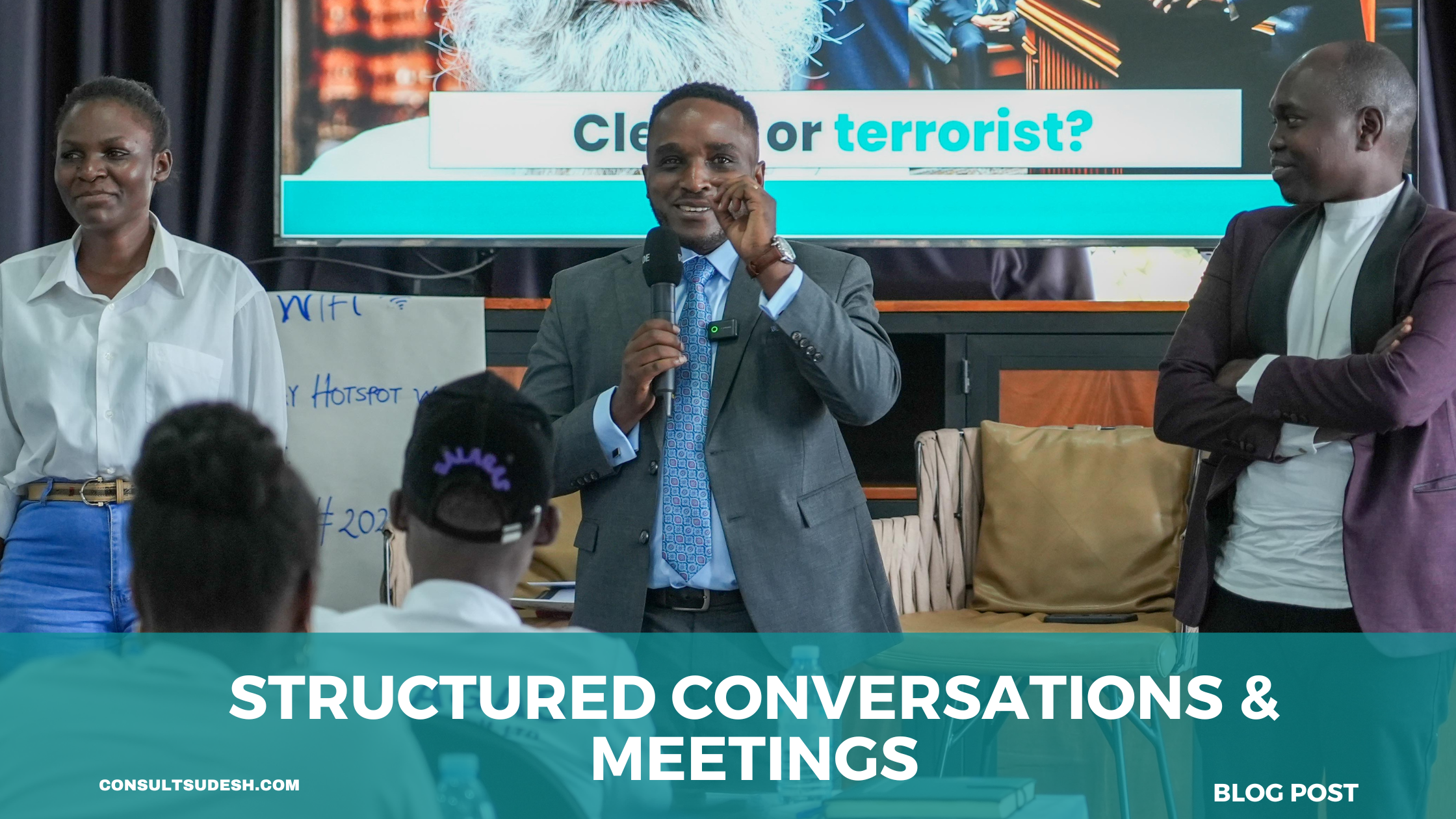Buildings serve many purposes and have many forms. If you were to ask an architect to design a building for you, he would immediately ask, ‘What will be the purpose of the building?’ Buildings can serve as a home, an office, a shopping complex, a hospital, or an airport. Buildings for different purposes have different forms and different structures. The architect needs to know the purpose of the building so that he can give it the required form, and provide appropriate structures to enable the building to fulfil its purpose efficiently.
The layouts of spaces and the locations of walls and openings must be different in a building that will be used as a home from a building that will be used as an office, and very different from a shopping complex or an airport!
Just as buildings serve many purposes, conversations and meetings also serve many different purposes. Yet, we use the term ‘meetings’ very loosely. You say ‘We had a meeting the other day’, or ‘We had a conversation, but it did not go well.’ As an architect of meetings (and conversations), I would ask, ‘What was the purpose of the meeting?
Was it designed to fulfil its purpose?’ Or, ‘What was the nature of conversation you intended to have?’ Meetings and conversations for different purposes should take different forms and require different structures.
A meeting between a suspect and an interrogator will be set up and run very differently to a meeting between two persons wanting to know each other.
A meeting to determine which side is right and which side is wrong, as court proceedings are, must be very different from a meeting of inquiry in which many parties wish to understand a problem together. Some of us from hot lands think of snow merely as a beautiful, undifferentiated white expanse to frolic in on a winter holiday. But Eskimos, who have to live amidst snow, must be able to discriminate different types of snow. They have 50 different words for snow to identify different types of snow, while most of us have only one word—snow.
Similarly, though we know that meetings can have many forms and we often use different words, such as ‘discussion’, ‘debate’ and ‘dialogue’ to describe meetings, we use these words very loosely, without discrimination. We may say that two persons were in a ‘dialogue’ when they were actually having an adversarial ‘debate’.
Meetings to enable people to listen deeply to each other, in other words, to be a real dialogue, can degenerate into adversarial debates if they are not properly conducted. The format of the discussion between parties with different views distinguishes dialogues from debates and from other forms of discussion. Just as it will be difficult to make a cosy home in a building designed for an office, it is difficult to listen to others deeply in a meeting that is designed as a debate.
‘Where do you stand in this matter?’ We ask others, metaphorically, when we want to know what their views are. Where we sit in a meeting can define our place in the conversation: the roles we are expected to play, and which side we are supposed to be on. Where we sit vis-à-vis others also influences our perceptions of where they may stand in the matter.
Before you call for a meeting, know its purpose and give it an appropriate name.








